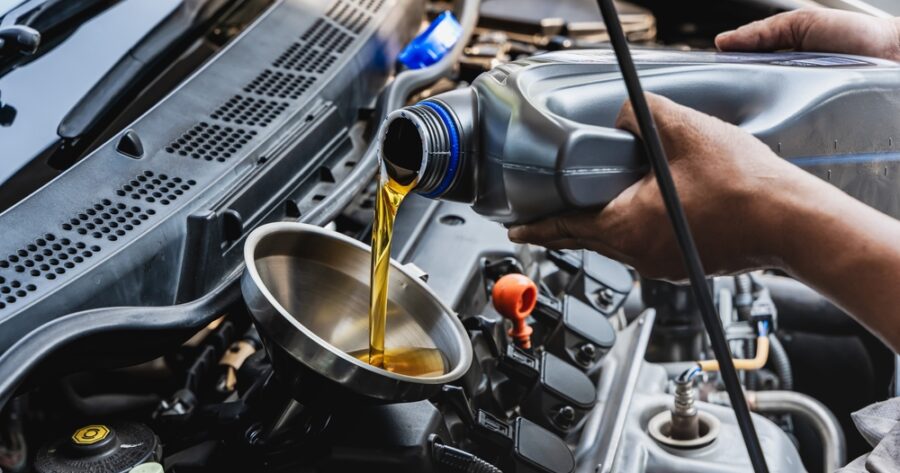Learning how to do your own oil change can save money and keep your car running well. Changing oil on your own might seem challenging, but with the right steps, it’s quite manageable. Here’s everything you need to know, from gathering tools to completing the change safely. Follow these steps to complete an oil change with confidence!
Gather the Right Tools and Supplies
Before you begin, make sure you have everything you need. Having the right tools handy will make the job easier and quicker. For a basic oil change, you’ll need:
- New oil (check your car’s manual for the right type and amount)
- A new oil filter
- A wrench to remove the oil drain plug
- An oil filter wrench
- A funnel for pouring in the new oil
- A container or oil pan to catch the old oil
- A pair of gloves and some rags for cleaning up
It’s essential to use the correct oil for your car. Most cars require a specific type and weight of oil, which you can find in the car’s manual or by asking a professional. Having the right tools ready helps prevent any hiccups during the process.
Prepare Your Vehicle
To safely change the oil, you’ll need to get your car in the right position. Park your car on a level surface, ensuring it’s stable. Ideally, the engine should be warm but not hot, as warm oil flows more easily. Warm up the car for a few minutes if it’s cold, then turn it off.
Next, lift the front end of your car if you don’t have enough space to work underneath. Using car ramps or a jack with safety stands is recommended. Never rely solely on a jack; safety stands are essential to keep the car secure while you work. Set your tools close by so you don’t have to reach or look for them once you’re under the car.
Drain the Old Oil
Once you’re in position and ready, locate the oil drain plug under your car. It’s usually on the bottom of the engine. Place your oil pan or container beneath the drain plug to catch the oil. Using your wrench, carefully loosen the drain plug and let the oil flow into the pan. This process can take a few minutes, so be patient and ensure the oil flows out completely.
While waiting, it’s a good time to clean up any mess with a rag and make sure your tools are ready for the next step. Once the oil has drained fully, replace the drain plug and tighten it securely. Avoid over-tightening, as this can damage the plug or cause leaks.
Replace the Oil Filter
With the old oil drained, it’s time to replace the oil filter. The oil filter is typically near the engine’s bottom, but its location can vary based on your vehicle model. Use your oil filter wrench to loosen and remove the old filter. Be prepared for a bit of oil to spill as you remove it.
Take your new filter and apply a small amount of new oil to the rubber gasket on the top of the filter. This step helps create a secure seal when you install it. Screw the new filter into place by hand, making sure it’s snug but not overly tight. Hand-tightening is usually enough to keep the filter secure without risking damage.
Add New Oil
After replacing the oil filter, it’s time to add new oil. Locate the oil fill cap on the top of your engine and remove it. Place a funnel into the opening to avoid spills, and slowly pour in the correct amount of oil as specified in your vehicle’s manual.
Once you’ve added the oil, replace the fill cap securely. Next, start your engine and let it run for a few minutes. This allows the new oil to circulate throughout the engine. Afterward, turn off the engine and check the oil level using the dipstick to ensure you’ve added the right amount. Top off as needed if the level is low.
Clean Up and Dispose of Old Oil
Now that your oil change is complete, clean up your workspace. Wipe any excess oil from the tools and your hands. Properly dispose of the used oil and old filter. Many auto shops and recycling centers accept used oil and filters without charge, as these materials need to be recycled responsibly.
Avoid dumping used oil in the trash or down the drain, as it’s harmful to the environment. Bringing it to a recycling center is the safest way to handle disposal.
Learn How To Do Your Own Oil Change
Changing your oil on your own may seem like a big task, but it’s straightforward with the right tools and steps. By learning how to do your own oil change, you can save money, maintain your car’s performance, and gain confidence in handling car maintenance.
Keep your car’s manual on hand for specific details, and enjoy the satisfaction of a job well done. Regular oil changes are essential for a healthy engine, and with practice, this task will become easier each time.
